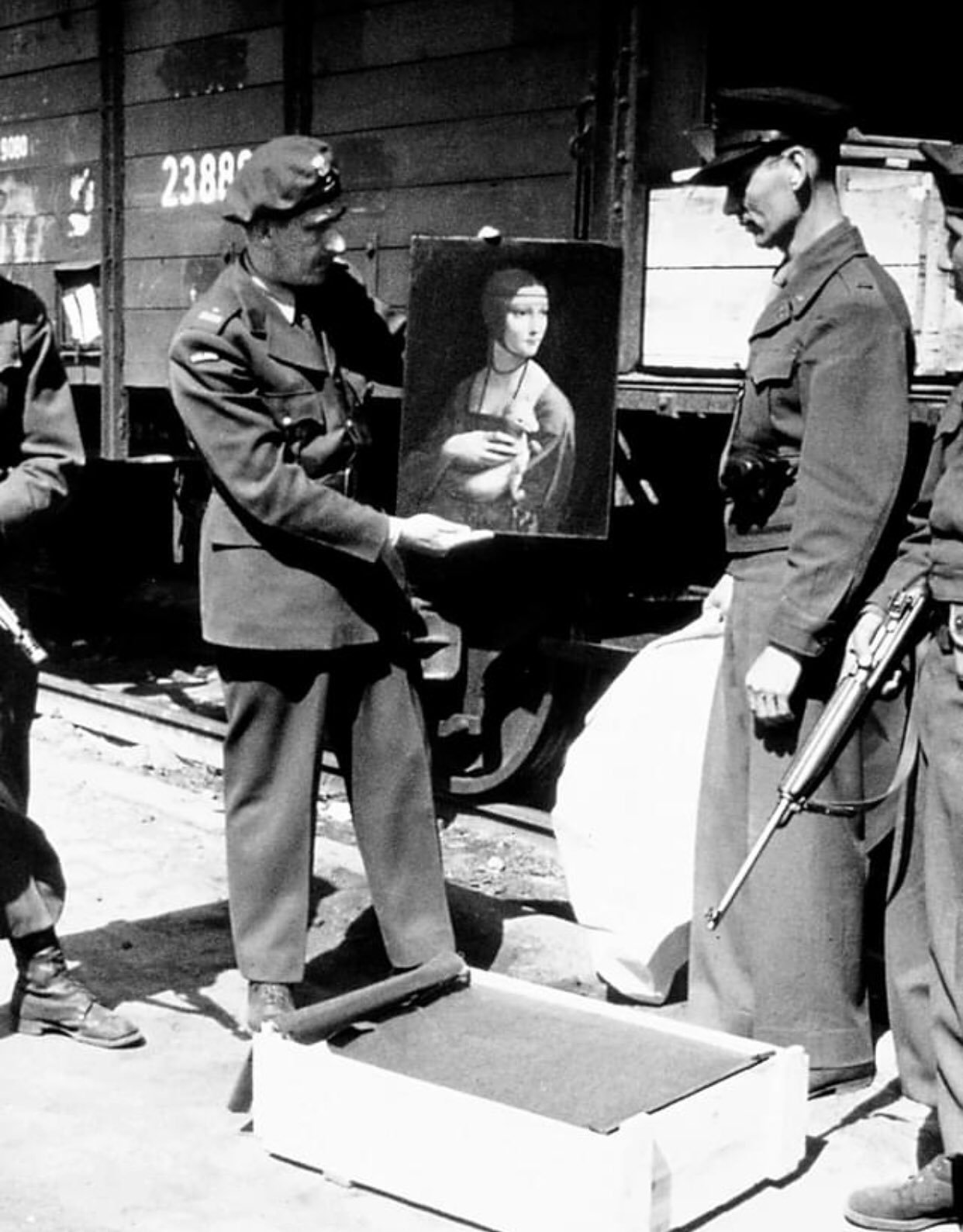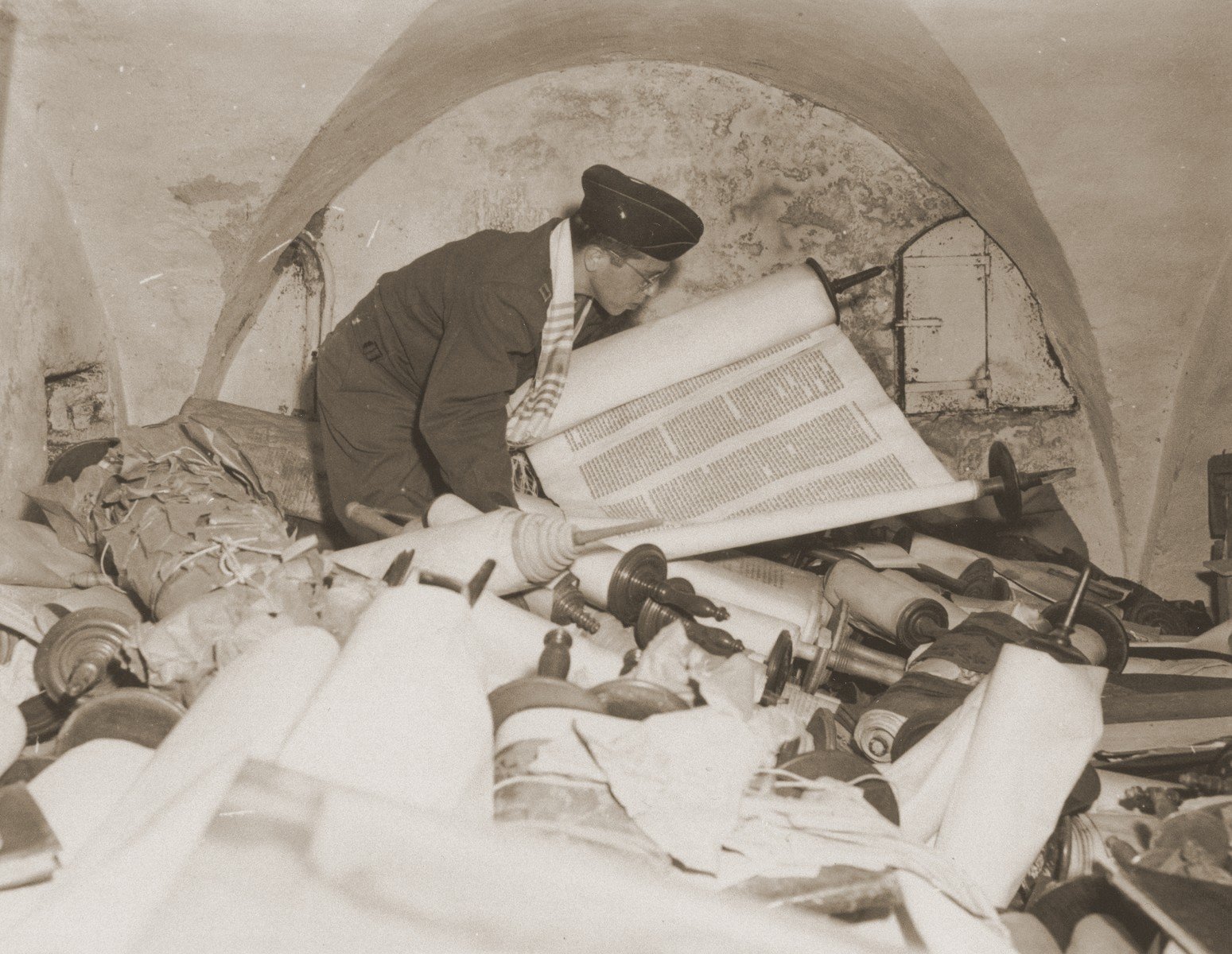Discover The Inspiration Behind: “MONUMENTS”
Why we chose the theme
World War II (WWII) was a terrifying demonstration of human-kind’s capacity for hatred, segregation, violence and greed. Scarred in history are the many stories of frontline battles lost and won; sons, brothers, fathers and uncles conscripted to war, sadly never to be seen again.
When we began to think about a theme for our second game at Cave Escape, we knew we wanted to explore WWII but were very much aware that a number of “bunker” type rooms already existed. To do the theme justice, we quickly established that we would need to focus on one of the lesser known stories of the period to give the room a sense of uniqueness and originality. When the Monuments Men (and Women) came up in our research, we knew we had our room. A story that had huge cultural impact and reach, that was inspirational and which sought to demonstrate the best of human-kind rather than the worst.
Our escape room MONUMENTS is based the true story of the “Monuments, Fine Arts and Archives Programme” (MFAA.) Operational from 1942-1946, they were an allied unit formed of art scholars, historians, architects and other experts whose purpose was to retrieve Europe’s stolen art which was plundered by the Nazis and often hidden in castles, mines and caves.
Rorimer Neuschwanstein Steps - Monuments Man Capt. James Rorimer oversees the evacuation of artwork from Neuschwanstein Castle by American military personnel near Füssen, Germany. Photo courtesy of the National Archives and Records Administration.
A brief history
Adolf Hitler, Germany’s Nazi dictator was the mastermind behind the Third Reich. He was ultimately responsible for the mass looting of Europe's art, supported by a military infrastructure and a number key officials, most notably, Herman Goering. In doing so, Hitler planned a megalithic showcase for the many rare and priceless artworks and artefacts that had been stolen throughout the war. An ultra-museum to be known as “Fuhrermuseum” was intended to be built in Linz, Austria. Fortunately, the museum was never created however in the process of gathering the prospective museum’s contents, a total of 40% of all art in Europe had been stolen by the Nazis.
Kirstein and Posey were two members of the Monuments, Fine Arts, and Archives section of the Allies, a small corps of men and a few women who put their careers as historians, architects, museum curators, and professors on hold to unite and work together towards a common cause. They found and recovered countless artworks stolen by the Nazis.
Much of their work was mostly forgotten to the public until Lynn H. Nicholas, an art scholar working in Brussels, read an obituary about a French woman who spied on the Nazis’ looting operation for years and singlehandedly saved 60,000 works of art. That sparked Nicholas to spend a decade researching her 1995 book, The Rape of Europa, which saw the resurrection of their story appearing in the movie, The Monuments Men, based upon Robert Edsel’s 2009 book of the same name.
"Without the [Monuments Men], a lot of the most important treasures of European culture would be lost," Nicholas says. "They did an extraordinary amount of work protecting and securing these things."
Return of Leonardo da Vinci's Lady with an Ermine to Poland - Monuments Man Lt. Frank P. Albright, Polish Liaison Officer Maj. Karol Estreicher, Monuments Man Capt. Everett Parker Lesley, and Pfc. Joe D. Espinosa, guard with the 34th Field Artillery Battalion, pose with Leonard da Vinci's Lady with an Ermine upon its return to Poland in April 1946. Photo courtesy of the National Archives and Records Administration.
When the allies advanced into Bruges, Belgium, in September 1944, pushing back the Nazis. Within days they had discovered the works of Dutch painter Johannes Vermeer. George Stout, of the monuments men, was summoned as he was the perfect candidate for the job of being on the frontline of the journey in recapturing the stolen art. He had pioneered new techniques of art conservation at Harvard's Fogg Museum prior to the war. Stout (played by George Clooney in the film as Frank Stokes) unsuccessfully advocated for the formation of a force similar to the Monuments Men with both American and British authorities early in the war. Frustrated, the World War I veteran enlisted in the Navy and worked on aircraft camouflage tactics until December 1944, when he was assigned to a small unit of 17 Monuments Men.
Stout crossed all through Europe in countries like France, Germany, and Belgium recovering works, usually traveling in a captured German Volkswagen. He was one of a handful of Monuments Men regularly leading the way on these missions. Stout merely referred to such journeys as "field trips” when writing to his wife Margie, back home.
Monuments Men like Stout often worked alone with finite resources. In one of his journal entries, stout writes about calculating the boxes, crates, and packing materials required for a shipment. "No chance of getting them," he wrote in April 1945.
Therefore stout and his men had to work with what they had. They transformed German sheepskin coats and gas masks into packing materials. They rounded up, making guards and prisoners to pack and load. "Never anywhere in peace or war could you expect to see more selfless devotion, more dogged persistence in going on, much of the time alone and empty-handed, to get it done," Stout wrote to a stateside friend in March 1945.
It is thanks to a toothache that lead the allies to discover Altaussee and its haul of stolen Nazi treasures and art. Two months before the discovery, Posey was in the ancient city of Trier in eastern Germany with Kirstein and needed treatment. The dentist he found introduced him to his son-in-law who was actually hoping to gain safe passage for his family to Paris, even though he had previous ties in assisting Herman Goering, Hitler’s second-in-command, steal trainloads of art. He told them the location of Goering's collection as well as Hitler's haul at Altaussee.
In 1939, the "Mona Lisa" was bundled into an ambulance and evacuated from the Louvre along with 400,000 other works of art. It avoided capture with the help of the Monuments Men by changing locations more than six times in the French countryside and was finally returned to the Louvre in 1945. Photo from Wikipedia Commons.
Hitler declared Altaussee as the most suitable hideaway for loot, intended for his museum. The complex series of tunnels had been mined by the same generations for 3,000 years, as Stout noted in his journal. Inside, the conditions were between 40 - 47 degrees and about 65% humidity, ideal for storing art. The deepest tunnels were more than a mile inside the mountain, safe from enemy bombs even if the location was discovered. The Germans constructed deep in the champer, floors, walls, and shelving as well as a workshop. From 1943 - 1945, a stream of trucks transported tons of treasures into the tunnels.
When Stout arrived at Altaussee on May 21, 1945, shortly after conflicts ended, he reported the contents based on Nazi records: 6,577 paintings, 2,300 drawings or watercolors, 954 prints, 137 pieces of sculpture, 129 pieces of arms and Armor, 79 baskets of objects, 484 cases of objects thought to be archives, 78 pieces of furniture, 122 tapestries, 1,200 - 1,700 cases apparently books or similar, and 283 cases contents completely unknown. The Nazis had built elaborate storage shelving and a conservation workshop deep within the mine, where the main chambers were more than a mile inside the mountain.
Stout also noted that there were plans for the demolition of the mine. Two months earlier, Hitler had issued the “Nero Decree,” which stated in part:
“All military transport and communication facilities, industrial establishments and supply depots, as well as anything else of value within Reich territory, which could in any way be used by the enemy immediately or within the foreseeable future for the prosecution of the war, will be destroyed.”
August Eigruber The Nazi district leader of Altaussee interpreted Hitler’s words as an order to destroy any objects of value, which included the demolition of the mines so the artwork would not fall into the hands of the allies. He moved eight crates into the mines in April. They were marked "Marble - Do Not Drop," but actually contained 1,100-pound bombs.
Torah Scroll Recovery -In a corner of the basement of the Race Institute were hundreds of Torah scrolls piled 10 feet high. American Chaplain Samuel Blinder examines a Sefer Torah as a he begins the overwhelming task of sorting and inspecting. 1945. Photo courtesy of the National Archives and Records Administration.
According to books by Edsel and Nicholas. Days before Posey and Kirstein entered, the local miners removed the crates with the large bombs. By the time this came to Eigrubers knowledge, it was too late. Two days after, the small charges were fired, shutting the mine's entrances, sealing the art safely inside.
Stout and his team were in a rush against time as the Soviets had “Trophy Brigades” whose job was to plunder enemy loot (it’s estimated they stole millions of items, including Old Master drawings, paintings, and books) from regions near Altaussee. The allies feared the treasures could be destined to fall into Joseph Stalin’s hands and On July 19, he reported that 80 truckloads, 1,850 paintings, 1,441 cases of paintings, 11 sculptures, 30 pieces of furniture, and 34 large packages of textiles had been removed from the mine. There was more, although not for Stout who left on the RMS Queen Elizabeth. on his way to a second monuments tour in Japan.




